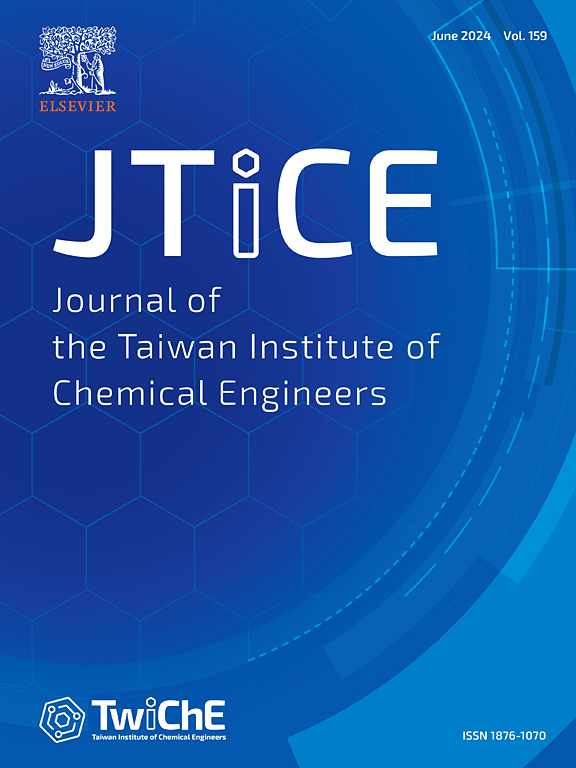微波合成的三元 BiOCl/BiOBr/Bi2O3 纳米复合材料可在可见光照射下增强有机污染物的降解能力
IF 5.5
3区 工程技术
Q1 ENGINEERING, CHEMICAL
Journal of the Taiwan Institute of Chemical Engineers
Pub Date : 2025-01-01
DOI:10.1016/j.jtice.2024.105520
引用次数: 0
摘要
本文章由计算机程序翻译,如有差异,请以英文原文为准。

Microwave synthesized ternary BiOCl/BiOBr/Bi2O3 nanocomposite for enhanced degradation of organic contaminants under visible light exposure
Background
This research addresses the urgent need for efficient water treatment methods to treat water pollution resulting from industrial activities and population growth. It focuses on developing semiconductor-based photo-catalysts with enhanced photocatalytic activity under visible light, aiming to contribute to pollution control and sustainable energy solutions.
Methods
A novel layer-structured ternary BiOCl/BiOBr/Bi2O3 nanocomposite was successfully synthesized via a rapid, one-step microwave-assisted method. The unique layered structure of this heterojunction facilitated efficient migration and separation of photoinduced electron-hole pairs, essential for effective photocatalysis.
Significant Findings
The synthesized nanocomposite exhibited excellent photocatalytic performance, achieving complete degradation of 30 mg L−1 RhB, 98.0% efficiency for 10 mg L−1 TCH, and 83.0% efficiency for 10 mg L−1 MO. Furthermore, the photo-catalyst displayed remarkable photostability, retaining 99.7% efficiency even after seven cycles of RhB degradation. The study also revealed favorable conditions for RhB degradation, emphasizing the impact of high temperature and low pH media while demonstrating the catalyst's resilience to the presence of ions (NO3−, Cl−, SO42−, and NH4+). The study indicates that singlet oxygen (1O2) was predominant among the oxidizing species in photodegradation. This work introduces a highly efficient and stable ternary BiOCl/BiOBr/Bi2O3 nanocomposite as a promising solution for addressing water pollution issues and harnessing visible light for photocatalytic applications.
求助全文
通过发布文献求助,成功后即可免费获取论文全文。
去求助
来源期刊
CiteScore
9.10
自引率
14.00%
发文量
362
审稿时长
35 days
期刊介绍:
Journal of the Taiwan Institute of Chemical Engineers (formerly known as Journal of the Chinese Institute of Chemical Engineers) publishes original works, from fundamental principles to practical applications, in the broad field of chemical engineering with special focus on three aspects: Chemical and Biomolecular Science and Technology, Energy and Environmental Science and Technology, and Materials Science and Technology. Authors should choose for their manuscript an appropriate aspect section and a few related classifications when submitting to the journal online.

 求助内容:
求助内容: 应助结果提醒方式:
应助结果提醒方式:


